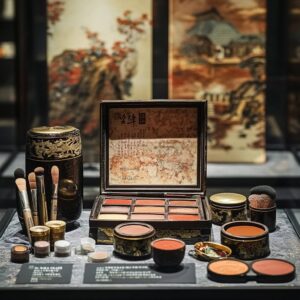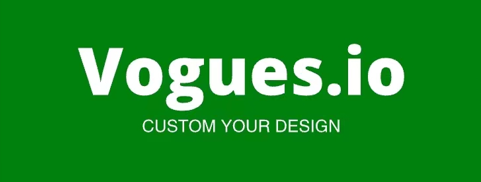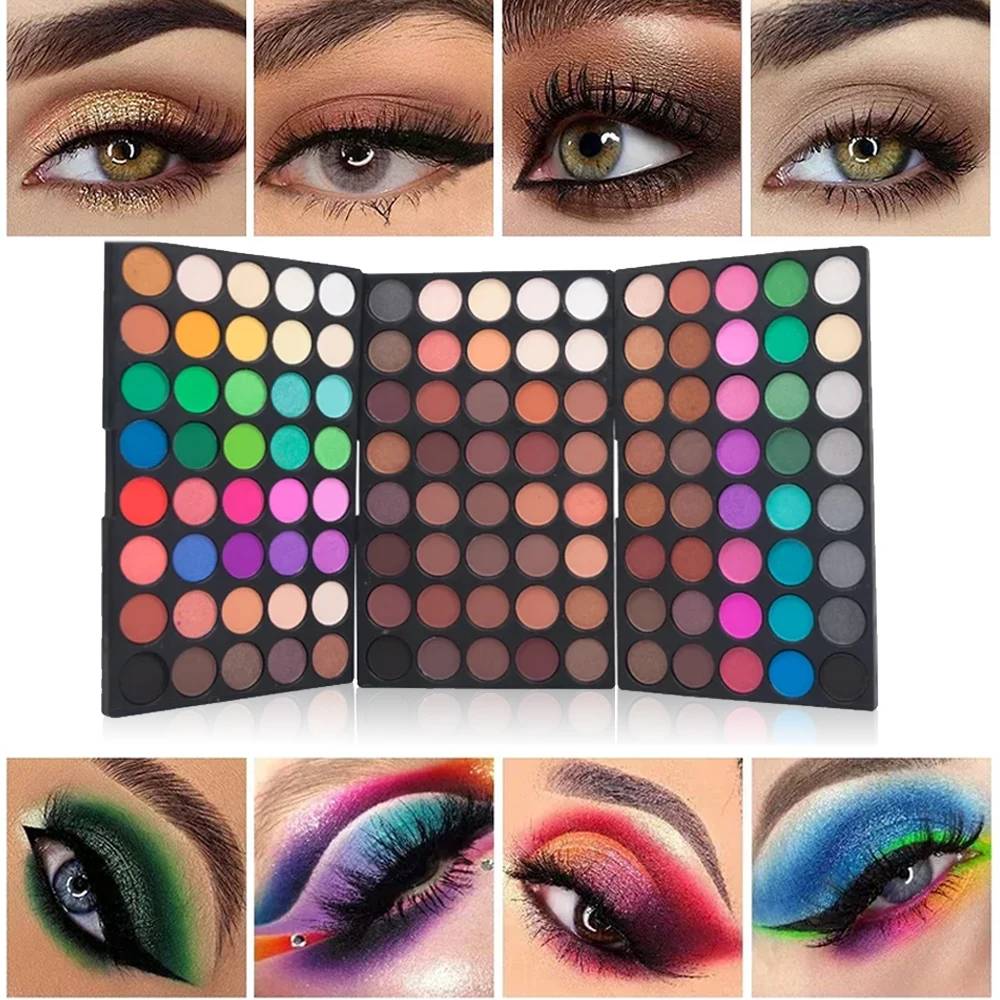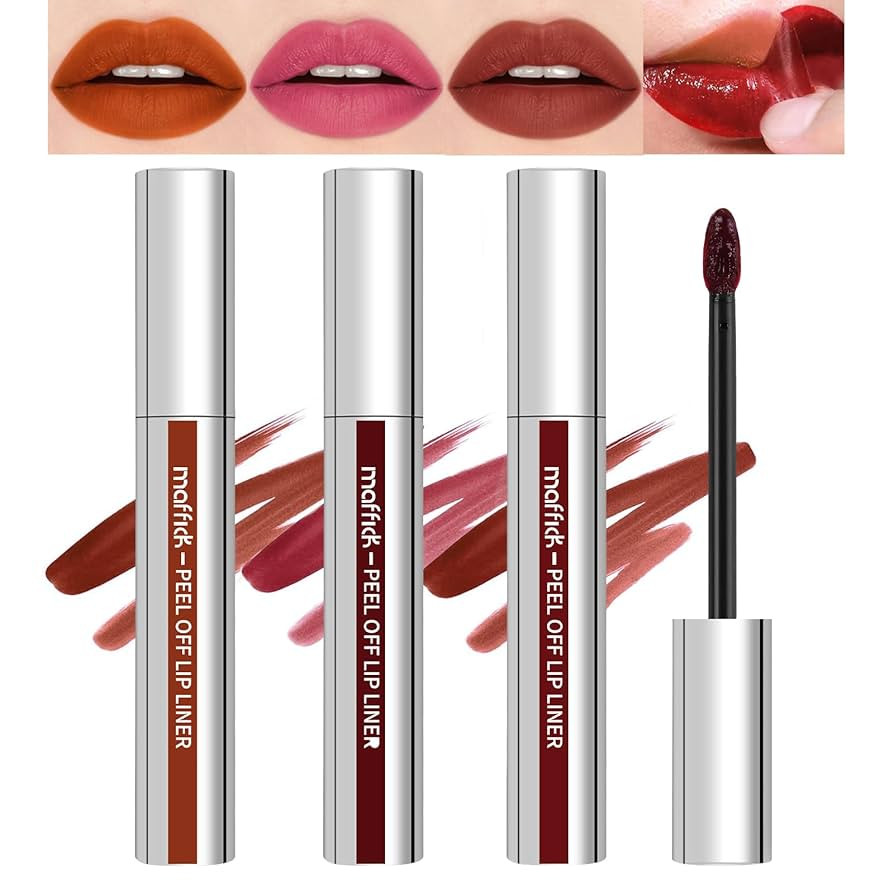Chinese custom makeup products have become more and more popular in recent years due to their vast range of possibilities and costs, which can accommodate a variety of consumer tastes.
Everything you need to know about sourcing, quality control, and the most recent developments in the Chinese bespoke makeup industry is in this article.
1. What is custom makeup?

The term “custom makeup” describes cosmetics made to satisfy specific tastes, enabling customers to alter color, formula, packaging, and even branding.
The increasing desire for customized cosmetic solutions and technological improvements are responsible for the rise of bespoke makeup. To assist clients in choosing hues and formulas that compliment their skin tones and personal preferences, brands frequently employ cutting-edge strategies, such as virtual try-on technologies and computerized color-matching tools. Furthermore, many businesses now provide online tools that let clients customize their cosmetics according to their skin tone and type, and even banned components, including harsh chemicals and allergens.
Additionally, the trend of bespoke cosmetics satisfies consumers’ growing awareness of diversity and equality in beauty. To ensure that everyone may discover a product that suits their features, many businesses offer several hues and alternatives that accommodate a wide array of skin tones and types.
Custom makeup packaging, which can be made to express business identification or personal flair, is another important component. In addition to improving the user experience, this degree of personalization fosters creativity. The need for personalized cosmetics is expected to increase as the beauty industry develops further, providing consumers and marketers with opportunities.
2. How many makeup products are there?

A wide range of goods designed to improve attractiveness and individual expression are available from the makeup industry. Because it enables customers to design items that meet their unique wants and tastes, custom makeup has grown in popularity. A closer look at a few of the most popular custom cosmetics items is provided below:
Custom Eyeshadow
Perhaps one of the most frequently customized goods is lipstick. Customer-created hues, finishes (matte, gloss, satin), and even formulas (hydrating, long-wearing, etc.) are frequently permitted by brands. To provide clients with a more customized experience, several manufacturers now allow them to engrave their names or phrases on the lipstick box or tube.
Custom Lipstick
One of the most popular items for personalization is probably lipstick. Customers can frequently design unique hues, finishes (matte, gloss, satin), and even formulas (hydrating, long-wearing, etc.) with brands. For a more individualized experience, several brands even allow consumers to engrave their names or messages on the lipstick box or tube.
Custom Mascara
Customers can choose the effects they want, such as curl, length, or volume, using personalized mascara. They can select from several formulas that address distinct requirements, such as conditioning formulas for healthier lashes or waterproof choices for extended usage. By addressing their problems, this customization guarantees the lash appearance they want.
Custom Lip Liner
Customers can choose neutral tones that blend with several colors or shades that go well with their lipsticks. Additionally, custom formulations can be made for long-lasting wear and smooth application, which helps to improve the appearance of the lips and avoid feathering.
Custom Eyeliner
Customers can select the color, texture, and finish that best fits their tastes with custom eyeliners. For longer-lasting results, users can also choose smudge-proof or waterproof solutions.
Custom Makeup Bags
People can customize their storage options with custom makeup bags. Customers can choose styles, colors, and sizes that suit their preferences, keeping their cosmetics neat and within easy reach. For a distinctive touch, this personalization may also involve the addition of names or initials.
Custom Palette
Products like blushes, highlighters, and eyeshadows are all combined into one compact in a personalized beauty pallet. It is also possible to create custom palettes to suit particular events or individual preferences.
Custom Makeup Vanity
The ideal area for application and organization can be created with custom cosmetic vanities tailored to each user’s requirements. Users can choose elements like lighting settings, mirror designs, and drawer configurations to ensure their cosmetics station is aesthetically beautiful and useful.
Custom Makeup Boxes
One-of-a-kind packaging options for cosmetics are custom makeup boxes. They are ideal as presents or for special events since they may be made to represent a brand’s identity or individual flair. Customers can choose prints, fabrics, and sizes that suit their tastes.
Custom Makeup Brushes
Custom options for everything from foundation brushes to blending sponges guarantee that people can effortlessly and precisely create the beautiful looks they want.
Bespoke Foundation
Customized foundations are made to fit specific skin types and tones, making them the ideal foundation for any makeup style. Whether they choose matte, dewy, or natural finishes, customers can customize the foundation to suit their requirements by indicating the coverage level, finish, and formulation they want.
Custom Makeup Desk
Custom cosmetic workstations are made to fit particular space and storage requirements. To create a cosmetics application workplace that is both practical and fashionable, users can choose elements like built-in lighting, drawer configurations, and surface materials.
Custom Makeup Mirror
Features like integrated illumination, changeable angles, and magnification options can be added to custom makeup mirrors. In addition to ensuring they have the ideal lighting and vision for accurate makeup application, users can select styles that suit their aesthetic.
Custom Makeup Wipes
Whether customer prefers moisturizing, exfoliating, or gentle washing, custom makeup wipes let them choose their favorite formulations. To address different skin types and issues, these wipes can be personalized with fragrances or particular substances.
Custom Makeup Sponges
Because custom cosmetic sponges are available in many sizes, shapes, and textures, customers can choose the ideal tools for their application methods.
3. Where is makeup made?

China is becoming a major force in the beauty business, but makeup products are made in many parts of the world. Several Chinese cities and provinces are well known for their capacity to produce cosmetics. Here is a deeper look at a few locations:
3.1 Guangzhou, Guangdong Province
The city serves both domestic and international markets. This region’s established supply chains and quality control requirements are the reason why many multinational beauty brands get their products from it.
3.2 Fengxian Area, Shanghai
Another significant location for the production of cosmetics is Shanghai’s Fengxian District. In the beauty business, the neighborhood is renowned for its cutting-edge production methods and technological advancements.
3.3 Huzhou, Zhejiang Province
Huzhou’s quick industrial development has drawn many mass-production cosmetics businesses, especially for reasonably priced beauty items. A crucial area for firms looking to expand their market reach, the region’s advantageous location within China also facilitates easy delivery throughout the nation. The factories in this area are frequently focused on packaging materials and cosmetics like brushes and sponges.
Because of the region’s significant investments in green technologies, the production processes have a negligible environmental impact. Both domestic and foreign firms seeking to satisfy the rising demand for natural and organic cosmetics are drawn to this emphasis on sustainability.
3.4 Tongliang Area, Chongqing
In the cosmetics business, Chongqing’s Tongliang Area is growing in significance. With an increasing number of companies and producers, this area specializes in manufacturing makeup and other beauty items.
3.5 Changsha, Hunan Province
Due to its investments in updating its manufacturing processes, the area is a desirable place to produce makeup. As a major participant in the regional supply chain for cosmetics, its advantageous position facilitates effective distribution throughout China and its surrounding nations.
3.6 Changping Area, Beijing
Another important neighborhood in Beijing for the creation of makeup, especially for luxury and high-end brands, is the Changping district. Advanced cosmetic research institutions in the area are well-known for developing innovative beauty technology and product formulations.
Due to Changping’s sophisticated infrastructure and highly qualified labor, numerous brands have established production facilities there, creating high-quality makeup.
4. Why import customized cosmetics from China?

Several benefits make importing personalized cosmetics from China a desirable choice for companies and customers. The following are some main reasons:
Cost-Effectiveness
China is well known for its economical production methods. Manufacturing cost savings can result from the combination of economies of scale, a large supplier network, and reduced labor costs. That enables companies to provide their clients with reasonable pricing, increasing the accessibility of customized cosmetics.
Wide Range of Options
Colors, formulas, container designs, and branding are some of the customization possibilities Chinese manufacturers offer. Businesses can develop distinctive products that satisfy particular customer preferences and market trends. The options are endless, whether it is custom lipsticks or custom foundations.
Advanced Technology and Innovation
To produce innovative formulations and goods, many firms spend money on research and development. Brands can stay ahead of the competition and satisfy changing consumer needs because of their dedication to innovation.
Quick Turnaround Times
Shorter production and delivery lead times are frequently the consequence of Chinese manufacturing’s efficiency. Businesses aiming to introduce new items or react quickly to market trends would benefit from this short turnaround time. By bringing items to market sooner, quick manufacturing cycles assist firms in maintaining a competitive edge.
Quality Control
Numerous Chinese producers follow global certifications and quality norms. Businesses may guarantee that the personalized cosmetics they import fulfill high-quality standards by collaborating with reliable suppliers. This emphasis on quality contributes to consumer trust and brand reputation.
Access to a Growing Market
Importing cosmetics from China enables companies to capitalize on the expanding market as customer preferences shift toward individualized and customized beauty goods. Brands may expand their consumer base and improve product offerings by catering to the growing need for distinctive goods.
Strong Supplier Relationships
Businesses can more easily locate partners that share their objectives and values thanks to China’s extensive network of manufacturers and suppliers. Stronger ties with suppliers can result in more flexibility, communication, and opportunities for collaboration, all of which will eventually improve the quality and development of products.
Diverse Ingredients and Formulations
Natural resources and traditional substances found in abundance in China can improve cosmetic formulas. By importing customized cosmetics, companies can take advantage of distinctive components that appeal to customers searching for cutting-edge and potent beauty treatments. In a competitive market, this diversity can help brands produce unique products.
Market Research and Trend Awareness
Chinese producers often lead in global beauty trends. They offer insightful information about customer tastes and new markets. Businesses can take advantage of local manufacturers’ knowledge and experience by importing customized cosmetics from China, guaranteeing that their products meet consumer expectations and current trends.
5. How much custom duty for makeup?

The following are vital factors to take into account when figuring the customs duty for makeup:
Country of Origin and Destination
Customs charges vary from nation to nation. Verifying the precise tariff codes for the nation where you intend to import the cosmetics is crucial.
HS Code Classification
Certain Harmonized System (HS) codes, which categorize items for international trade, apply to makeup products. Every product category, including foundations, lipsticks, and eyeshadows, has a unique HS code for the relevant duty rate.
Value of Goods
Usually, the customs duty is computed as a percentage of the total value of the imported items. This amount covers the product’s price as well as delivery and insurance. Customs laws in the importing nation will determine the precise proportion.
Duty Rates
Various duty rates apply to makeup goods. As an example, many cosmetic items are subject to duty rates ranging from 0% to 6% in the European Union, although these rates vary significantly.
Customs Declarations and Documentation
Having the appropriate paperwork is crucial when importing cosmetics. To guarantee precise duty computations, importers must go through product descriptions. Also, check their HS codes and values.
There are numerous ways to find premium products that are suited to your requirements when purchasing bespoke cosmetics. This guide examines the top places to get custom makeup, including Chinese manufacturers, business-to-business websites, and wholesale markets, regardless of whether you are a shop, a brand trying to grow your product line, or a customer looking for customized cosmetics.
6. Custom Makeup Manufacturers

Here are some trustworthy wholesale marketplaces and business-to-business websites where you can locate producers of personalized makeup.
6.1 B2B Websites
6.1.1 Alibaba.com
6.1.2 Made-in-China.com
6.1.3 DHgate.com
6.1.4 GlobalSources.com
6.1.5 AliExpress.com
6.1.6 Chinabrands.com
6.1.7 Huntersourcing.com
6.1.7 vogues.io
6.2 10 Cosmetics Wholesale Markets in China
Many wholesale stores in China specialize in cosmetics for people who want to buy custom makeup in bulk or try out different items in person. The following list of 10 prominent markets offers possibilities for bespoke makeup:
6.2.1 Guangzhou Beauty Centre (Mei Bo Cheng)
This market is a terrific area to look into possible collaborations because many suppliers and manufacturers provide customization choices.
6.2.2 Shenzhen Mingtong Cosmetics Market
Custom makeup is among the many beauty products that Shenzhen Mingtong Cosmetics Market is renowned for offering. This market is perfect for people who want to buy in bulk or learn about the latest trends.
6.2.3 Guangzhou Xingfa Plaza
Guangzhou Xingfa Plaza is a significant wholesale hub for cosmetics and other beauty supplies. Many of its vendors provide possibilities for bespoke cosmetics.
6.2.4 Yiwu International Trade City
Yiwu International Trade City features numerous vendors specializing in custom makeup, making it a valuable resource for businesses seeking diverse beauty options.
6.2.5 Linyi Wholesale Market
Cosmetics are among the many goods sold at the Linyi Wholesale Market. With numerous merchants open to haggling, this market provides several beauty products, including opportunities for creative makeup.
6.2.6 Chengdu Lotus Pond Wholesale Market
This Chengdu market is a terrific place to locate unique beauty solutions because the vendors here frequently provide personalizable options.
6.2.7 Liuduqiao Cosmetics Wholesale Market
Beijing’s Liuduqiao is a great place to find customized cosmetics because many shops offer bespoke makeup alternatives.
6.2.8 Lanzhou Yuchikou Small Commodity Market
This market is smaller but still the perfect place for personalized makeup and other unusual beauty products. It’s a great area to get specialty cosmetics because local producers frequently provide customized solutions.
6.2.9 Harbin Jiaolong Cosmetics Mall
This cosmetics mall in Harbin has a variety of exhibitors selling beauty products, including personalized makeup. It is a well-liked location for merchants and companies seeking to purchase distinctive cosmetics in large quantities.
6.2.10 Xi’an Beauty Exchange Center
Custom makeup and other beauty goods are increasingly available at the Xi’an Beauty Exchange Center. The facility houses several vendors who provide customized choices and let customers look at a large selection of goods.
7. How to customize makeup?

Whether you’re a customer interested in personalized cosmetics or a brand trying to create a distinctive product line, here’s a comprehensive guide on how to successfully customize makeup:
Identify Your Needs and Preferences
- Target Audience
Identify your intended audience. Are sensitive skin types, professionals, or teenagers the target market for your products?
- Color Preferences
Consider the color schemes that your target audience finds appealing. To get opinions on preferred hues, focus on groups or surveys.
Determine the Formulation
- Ingredients Selection
Choose the foundational components for your cosmetics. Consider elements like skin type, preferred finish (matte, satin, or dewy), and any specific advantages (anti-aging, hydration, or oil management).
- Natural vs. Synthetic
Depending on consumer tastes and market requirements, select synthetic formulations or natural ingredients. Nowadays, many customers are looking for clean beauty products.
- Customization Levels
Find out from the manufacturer how much personalization is feasible. While some manufacturers might have preset settings, others might give you total flexibility over the formulation.
Create Color Samples
- Shade Development
Based on your preferred color scheme, collaborate with your manufacturer to produce trial colors. That could entail blending paints and experimenting with different combinations.
- Testing
To test on various skin tones, request samples of the developed colors. Ensuring the colors look good on several skin tones requires this stage.
Packaging Design
- Choose Packaging
Consider the many packaging choices for your personalized cosmetics. The package must be aesthetically pleasing, useful, and consistent with your brand.
- Branding
A product’s perceived worth can be raised by attractive packaging.
Labeling and Compliance
- Label Information
Verify that the product’s label contains all relevant information, including ingredients, usage guidelines, and applicable cautions or disclaimers.
- Regulatory compliance
Verify that your personalized follows the cosmetic laws in your area. Safety evaluations, product registration, and labeling compliance are a few examples of this.
Conduct Stability and Safety Testing
- Stability Testing
Stability tests entail evaluating the makeup’s performance in several environments, including temperature, humidity, and light exposure.
- Safety Testing
Verify the makeup’s suitability for use by conducting safety evaluations. Patch testing or more thorough dermatological research may be part of this, particularly if the product has active components.
Gather Feedback
- Market Testing
Market tests might offer insightful information about the functionality and general appeal of the product.
- Adjustments
Be willing to change things in response to criticism. This could entail adjusting the packaging, hues, or formulation.
Launch Your Custom Makeup Line
- Marketing Strategy
Create a marketing plan to advertise your personalized cosmetics. This could involve influencer collaborations, social media campaigns, and promotional activities.
- Distribution Channels
Find out how your bespoke makeup will be distributed. Beauty boutiques, internet storefronts, and joint ventures with bigger merchants are some possible options.
Continuous Improvement
- Monitor Performance
Following the launch, keep a close eye on how well your products are doing in the marketplace. To determine how well the makeup is accepted, pay attention to sales data and customer reviews.
- Iterate and Innovate
Based on consumer trends and preferences, be ready to change your products and launch new limited-edition collections, formulas, or hues.
8. How does custom makeup manufacturing work?

A sophisticated method called custom cosmetics production enables companies and individuals to produce distinctive beauty products suited to their requirements and tastes.
Businesses may work with manufacturers to create high-quality cosmetics more successfully if they understand the manufacturing process.
Here is a thorough rundown of how the production of personalized makeup works:
Concept Development
- Idea Generation
Creating a concept for the personalized cosmetic item is the first step in the procedure. That entails determining the target market and their requirements and specifying the product kind (foundation, lipstick, and eyeshadow, for example).
- Market Research
Finding trends, customer preferences, and gaps in the current product offers is made easier with the use of market research.
Choosing a Manufacturer
- Evaluating Suppliers
It is critical to assess possible manufacturers according to their background, skills, industry reputation, and certifications (such as ISO or GMP).
Formulation Development
- Custom Formulation
A lot of manufacturers provide the opportunity to design a unique formulation. To get the right consistency, texture, and performance, this process might need to be repeated several times.
Color Matching and Testing
- Color Development
Creating the product’s desired colors is the next stage after formulating the recipe. That may entail blending pigments to produce particular hues and textures.
- Sample Creation
For assessment, the producer creates sample batches of the customized makeup. Brands can use these samples to test the product’s performance, texture, and look on various skin types.
Stability and Safety Testing
- Stability Testing
To ensure that the product maintains its quality over time, stability testing is conducted. That involves storing the product under various conditions (temperature, humidity, light exposure) to observe its behavior and shelf life.
- Safety Assessments
To verify the makeup is safe for consumer usage, safety testing is essential. That could involve patch tests or more thorough dermatological research, particularly if the product has sensitive or active components.
Packaging and Branding
- Packaging Design
Branding and user experience depend on the package selection. Manufacturers and brands can collaborate to choose or create packaging that embodies the brand’s personality and appeals to customers.
Production Planning
- Order Quantities
Brands must decide on the order quantity after the formulation is complete and the samples are accepted.
- Production Scheduling
Depending on their present capacity and the amount of the order, the manufacturer will propose a production schedule.
Manufacturing Process
- Batch Production
Custom makeup is made in small quantities. The product is made by the producer carefully following the recipe, which involves measuring and combining ingredients.
- Quality Control
The implementation of quality control methods throughout the production process guarantees that the final product satisfies predetermined requirements.
Final Testing and Approval
- Final Quality Checks
The final items are put through quality inspections before packaging to make sure they are defect-free and satisfy the agreed-upon parameters.
- Approval Process
Before the finished product is packaged and transported, brands frequently need to give their approval.
Packaging and Shipping
- Packaging
After approval, the products are packaged following the established guidelines. This covers any secondary packing that may be required and labeling.
- Shipping
To get the completed goods to the brand’s warehouse or distribution center, the manufacturer arranges shipment. During this stage, import laws and customs clearance must also be considered.
Post-Production Support
- Feedback Loop
Following the product’s release, companies can collect performance information and customer reviews. Future iterations or the creation of new products may benefit from this information.
- Ongoing Collaboration
Depending on market trends, brands may decide to modify current items or keep collaborating with the manufacturer for upcoming product lines.
9. What certificates are required for imported custom cosmetics?

To guarantee adherence to regional laws and norms, several documents and paperwork could be needed when importing custom cosmetics.
Although the precise certifications necessary can differ by nation and area, the following are some frequently needed certifications and paperwork for imported cosmetics:
Cosmetic Product Safety Report (CPSR)
CPSR is sometimes necessary to prove that cosmetic products are safe for human consumption.
Certificate of Free Sale (CFS)
This certification guarantees import authorities that the goods conform to national standards and local laws.
A facility that complies with accepted quality management standards is verified to have produced the cosmetics by GMP certification. Products are continuously produced per strict quality and safety standards, thanks to this accreditation.
Ingredient Declaration
An ingredient statement aids consumers and regulatory bodies in identifying possible allergens or dangerous compounds and is necessary for labeling rules to be followed.
Labeling Compliance
Local laws governing ingredient lists, usage guidelines, warnings, and other information must be followed on product labels. Certain areas require labels to contain particular cautions or disclaimers and be written in the native tongue.
Import License
To import cosmetics into certain nations, a license may be needed. Depending on the kind and quantity of goods being imported, this license may change.
Health and Safety Certifications
Specific health and safety certifications could be necessary depending on the nation, particularly for cosmetics with active components or unique formulas. That can include natural, organic certifications or cruelty-free claims.
Tax and Customs Documentation
To speed up the import procedure, importers must submit customs documentation, such as packing lists, business invoices, and any necessary customs declarations.
Animal testing for cosmetics is prohibited in some places, particularly in the European Union. To demonstrate that the products are cruelty-free, a certification or declaration might be necessary.
Specific Regional Certifications
Regulations from the FDA in the US, the European Commission in the EU, or the Ministry of Health in nations like China are examples of places that may have particular needs. Importers should educate themselves on local laws and target market-specific certification standards.
Conclusion

Importing custom cosmetics entails a thorough procedure that guarantees the goods’ quality, safety, and compliance with regulations. To make sure their products satisfy the standards of the target market, importers must follow several procedures, from getting important certifications like the Cosmetic Product Safety Report (CPSR) and GMP certification to following local labeling and safety laws.
It is crucial to comprehend and prepare the required paperwork because each region may have different requirements. That prevents delays.
Custom cosmetics can be effectively introduced to international markets by companies that maintain awareness of the regulatory requirements, work closely with reliable producers, and obtain the necessary certifications.
In addition to guaranteeing compliance, this meticulous planning fosters consumer trust by providing high-quality, safe cosmetics.



